Your cart is currently empty!
Blog
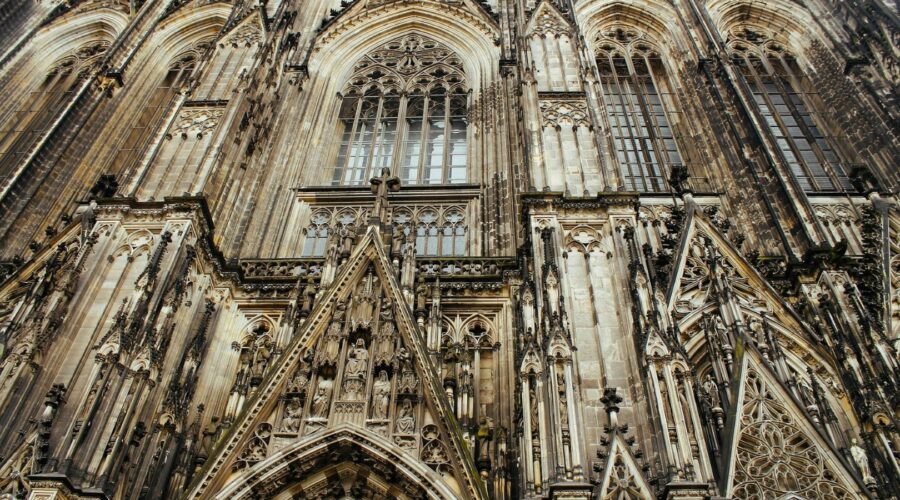
Explore the Architectural Marvel: A Comprehensive Guide to St. John’s Cathedral
Discover the History and Significance
Nestled in the heart of the bustling city, St. John’s Cathedral stands as a testament to architectural brilliance. Its rich history dates back to the 12th century, when it was founded as a humble chapel. Over the centuries, it has undergone numerous renovations and expansions, evolving into the magnificent structure it is today.
The cathedral holds immense religious and cultural significance. It is the seat of the Archbishop of Melbourne and plays a pivotal role in the Anglican community. Throughout its history, St. John’s Cathedral has witnessed countless baptisms, weddings, funerals, and other important religious ceremonies.
Architectural Highlights
Gothic Revival Exterior
St. John’s Cathedral embodies the Gothic Revival architectural style, characterized by its soaring spires and intricate stonework. The exterior is adorned with flying buttresses, pointed arches, and decorative pinnacles, creating an awe-inspiring facade.
Stained Glass Windows
Stepping inside the cathedral, visitors are greeted by an explosion of color. The magnificent stained glass windows depict biblical scenes, historical events, and portraits of saints. The light filtering through the intricate panes creates a ethereal and reverent atmosphere.
Impressive Nave
The nave of the cathedral is a vast and impressive space. Its high vaulted ceilings, supported by graceful columns, create a sense of grandeur and openness. The nave is lined with box pews, providing seating for hundreds of worshippers.
Transepts and Crossing
The transepts extend from the nave perpendicularly, creating a cruciform floor plan. The crossing, where the nave and transepts intersect, is marked by a majestic dome. The interior of the dome is decorated with intricate mosaics and biblical inscriptions.
Lady Chapel
Located behind the high altar, the Lady Chapel is a sacred space dedicated to the Virgin Mary. Its delicate stone carvings, soft lighting, and stained glass windows create an intimate and contemplative atmosphere.
Tips for Visiting
- Guided Tours: Guided tours are available throughout the week, providing visitors with a comprehensive overview of the cathedral’s history and architecture.
- Service Times: St. John’s Cathedral holds regular services throughout the week, offering an opportunity for visitors to experience the sacred ambiance of the space.
- Concert and Events: The cathedral hosts a variety of concerts and events, including classical music performances, choral recitals, and exhibitions. Check the website for upcoming events.
- Accessibility: St. John’s Cathedral is wheelchair accessible, with ramps and elevators providing access to all levels.
- Photography: Photography is permitted inside the cathedral, but flash photography is not allowed.
Additional Information
Address: 380 Flinders St, Melbourne VIC 3000, Australia
Contact: Visit the official website at https://www.stjohnscathedral.com.au/ or call (03) 9653 5000.
Social Media: Follow St. John’s Cathedral on social media for updates and events:
Conclusion
St. John’s Cathedral is a true architectural masterpiece that embodies the spirit of Melbourne. Its soaring spires, intricate stained glass windows, and awe-inspiring nave create an unforgettable experience for visitors. Whether you are attending a service, exploring its history on a guided tour, or simply admiring its architectural beauty, St. John’s Cathedral is a destination that should not be missed.
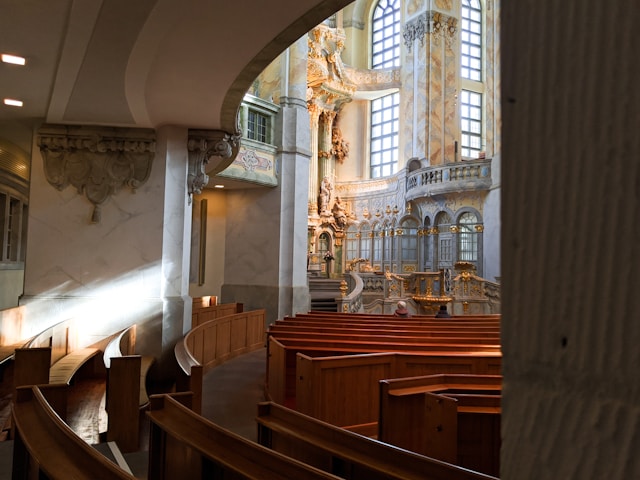
Discover the Enchanting History and Splendor of Saint Mary Church
A Tapestry of Faith and Architectural Masterpiece
Nestled in the heart of the quaint and picturesque town of [Town Name], Saint Mary Church stands as a testament to the enduring power of faith and the artistry of human hands. Built in the [Century] century, this magnificent edifice has witnessed countless milestones in the town’s history, becoming an integral part of the community’s social, cultural, and spiritual landscape.
Architectural Heritage
Saint Mary Church is a breathtaking example of [Architectural Style] architecture, characterized by its soaring spires, intricate stonework, and stained-glass windows that flood the interior with ethereal light.
Spires and Bell Tower
Two towering spires, each reaching a height of over [Height] feet, dominate the church’s exterior. These spires, adorned with intricate carvings, create an awe-inspiring presence that can be seen from miles around. Atop one of the spires stands a magnificent bell tower, housing a set of bells that toll throughout the town, marking important occasions and calling the faithful to worship.
Stonework
The church’s exterior is adorned with exquisite stonework, showcasing the meticulous craftsmanship of skilled masons. Intricate carvings depict scenes from the Bible, including depictions of Christ, the Virgin Mary, and numerous saints. The stonework also features a series of gargoyles, which are said to protect the church from evil spirits.
Stained-Glass Windows
Inside the church, visitors are greeted by a symphony of colors and light emanating from the stunning stained-glass windows. These windows, crafted by renowned artisans, depict scenes from the Old and New Testaments, as well as the lives of various saints. The intricate details and vibrant hues create a truly awe-inspiring spectacle.
History and Significance
The construction of Saint Mary Church began in [Year], a time of great religious fervor and significant architectural advancements. The church was built upon the site of an earlier chapel, which had become too small to accommodate the growing congregation.
Over the centuries, Saint Mary Church has undergone several renovations and additions, reflecting the changing needs of the community. The most significant renovation took place in the [Century] century, when the church was expanded and the spires were added.
The church has played a pivotal role in the life of the town, hosting countless baptisms, weddings, funerals, and other important events. It has also been a center of education, providing a place for religious instruction and community gatherings.
Today, Saint Mary Church continues to be an active and vibrant parish, serving the spiritual and social needs of the community. It is a place of worship, contemplation, and fellowship, where people from all walks of life come together to celebrate their faith and build a sense of community.
Visiting Saint Mary Church
If you are fortunate enough to visit Saint Mary Church, here are some tips to make the most of your experience:
Attend a Service
Attend a Sunday mass or weekday service to witness the church’s grandeur in action. The service includes beautiful music, inspiring sermons, and a chance to connect with the local community.
Explore the Interior
Take the time to explore the interior of the church, marveling at the intricate stained-glass windows, the ornate altars, and the beautiful artwork that adorns the walls.
Climb the Bell Tower
For a breathtaking view of the town and the surrounding countryside, climb the stairs to the bell tower. Note that this may require prior permission or may be accessible only on specific occasions.
Attend a Guided Tour
If possible, arrange a guided tour to learn more about the church’s history, architecture, and significance. This is a great way to gain a deeper understanding of this remarkable landmark.
Additional Resources
For more information about Saint Mary Church, please visit the following resources:
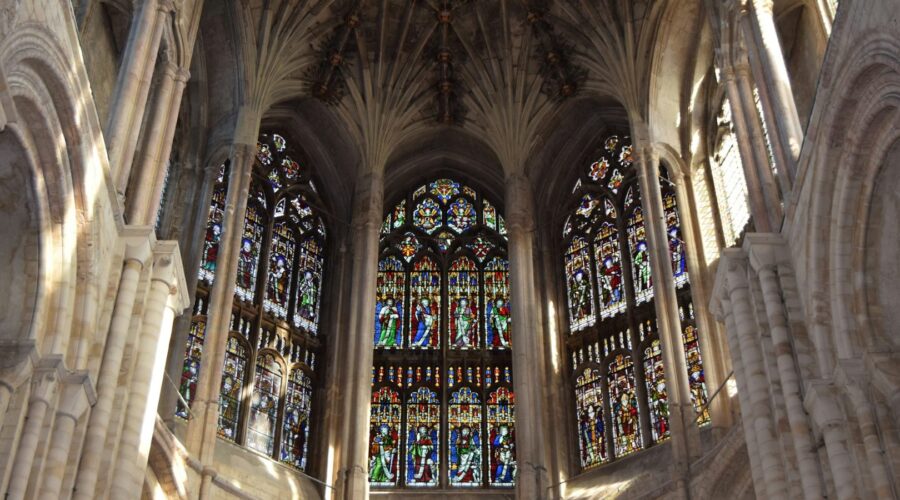
Discover the Enchanting Saint Francis of Assisi Church: A Pilgrimage of Faith and History
Introduction
Nestled amidst the picturesque hills of Assisi, Italy, the Basilica of Saint Francis is a towering testament to the life and legacy of one of Christianity’s most beloved saints. This magnificent architectural masterpiece draws pilgrims and tourists alike from around the globe, offering a glimpse into the spiritual journey of Saint Francis and the enduring impact of his teachings.
History and Architecture
Early Origins
The basilica’s construction commenced in 1228, two years after Saint Francis’s death. The monumental project was spearheaded by Pope Gregory IX, who canonized the humble friar and initiated the building of a grand church to honor his memory.
Architectural Marvel
The basilica consists of two distinct churches: the Upper Basilica, consecrated in 1253, and the Lower Basilica, completed in 1230. The Upper Basilica boasts a glorious façade adorned with intricate Gothic carvings, while the interior astounds with its frescoed walls and vaulted ceiling.
The Lower Basilica, accessed through an enchanting courtyard, is a captivating fusion of Romanesque and Gothic elements. Its star-vaulted ceiling is a masterpiece of medieval engineering and artistry, adorned with frescoes depicting scenes from Christ’s life and the life of Saint Francis.
Saint Francis’s Legacy
Beyond its architectural splendor, the Saint Francis of Assisi Church holds profound religious significance as a pilgrimage site dedicated to the life and teachings of the beloved saint.
The Life of Saint Francis
Born in 1181 into a wealthy family, Francis abandoned a life of luxury after a profound spiritual experience. He renounced his worldly possessions and embarked on a path of poverty, humility, and service to others.
Saint Francis founded the Franciscan Order, a religious community that embraced a life of simplicity and love. He became renowned for his compassion towards the poor, marginalized, and animals.
Spiritual Teachings
Saint Francis’s teachings emphasized the virtues of humility, poverty, and peace. He believed in the inherent goodness of all creatures and advocated for the protection of nature. His writings and example have inspired countless individuals throughout history and continue to guide the Franciscan Order today.
Pilgrimage and Spirituality
The Saint Francis of Assisi Church is a revered pilgrimage destination for Catholics and non-Catholics alike. Pilgrims come from far and wide to experience the spiritual atmosphere and to connect with the life of Saint Francis.
The Pilgrim’s Way
The Pilgrim’s Way, a scenic path lined with churches and monasteries, links Assisi to the nearby town of Spello. Pilgrims often choose to walk this ancient route as a spiritual preparation for their visit to the basilica.
Spiritual Retreats
The basilica offers spiritual retreats and guided tours that delve into the teachings and life of Saint Francis. Visitors can immerse themselves in the beauty of the church, contemplate the saint’s message, and engage in personal reflection.
Artistic Treasures
The Saint Francis of Assisi Church is also home to an impressive collection of artistic masterpieces.
Frescoes by Giotto
The Upper Basilica boasts a cycle of 28 frescoes by the renowned Italian painter Giotto di Bondone. These exquisite artworks depict scenes from the life of Saint Francis and the virtues he espoused.
Cimabue’s Crucifix
The Upper Basilica also houses Cimabue’s monumental wooden crucifix. This iconic work, created in the 13th century, is renowned for its expressive portrayal of Christ’s suffering and the emotional response from the surrounding figures.
Practical Information
Visiting the Basilica
The Saint Francis of Assisi Church is open to visitors daily, with guided tours available for an enhanced experience. Admission fees apply for both the Upper and Lower Basilicas.
Accommodation and Transportation
Assisi offers a range of accommodation options, from budget-friendly hostels to luxurious hotels. The town is easily accessible by train or bus from major cities in Italy.
Tips for Pilgrims
* Allow ample time for your visit, as the complex is vast and there is much to explore.
* Take time to walk the Pilgrim’s Way or engage in a spiritual retreat to deepen your experience.
* Respect the sanctity of the basilica and observe the rules and regulations for visitors.Conclusion
The Saint Francis of Assisi Church is a captivating destination that transcends religious affiliation and appeals to all who seek inspiration, beauty, and spiritual connection. Embarking on a pilgrimage to this sacred site is an unforgettable experience that will illuminate the life and legacy of Saint Francis and leave an enduring impact on your heart and mind.
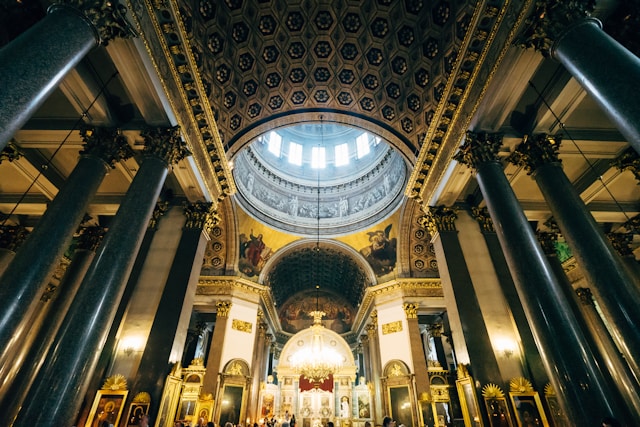
St. Jude: The Patron Saint of Lost Causes
Introduction
Saint Jude Thaddeus, the patron saint of lost causes, is revered by many worldwide. His name, Jude, is derived from the Hebrew “Judah,” meaning “praised.” In addition to his role as a disciple of Jesus, Jude was also an author of the New Testament book named the Epistle of Jude.
Life and Ministry
Early Life and Calling
Born into a humble family in Galilee, Jude’s life took a transformative turn when he encountered Jesus Christ. He became one of the twelve disciples, accompanying Jesus during his earthly ministry.
The Acts of the Apostles
After Jesus’ resurrection and ascension, Jude is mentioned in the Acts of the Apostles as being present at the apostles’ meeting in Jerusalem. He was also part of the group that elected Matthias to replace Judas Iscariot as the twelfth apostle.
Missionary Journeys
Jude embarked on missionary journeys with the other apostles, spreading the gospel message. According to tradition, he traveled to various regions, including Persia, Mesopotamia, and North Africa.
The Epistle of Jude
Authorship and Purpose
Jude authored a canonical epistle in the New Testament, known as the Epistle of Jude. It is a short but powerful letter written to encourage believers to contend for the faith and resist false teachers.
Key Themes
The Epistle of Jude emphasizes several key themes, including:
- The need for Christian unity
- The importance of faithfulness
- The judgment that awaits false teachers
Patronage of Lost Causes
Historical Origins
The association of St. Jude with lost causes dates back to the Middle Ages. It is believed that medieval pilgrims often invoked his intercession when facing seemingly hopeless situations.
Contemporary Significance
Today, St. Jude continues to be venerated as the patron saint of lost causes. People from all walks of life seek his prayers for guidance, hope, and comfort in times of difficulty.
Devotional Practices
Feast Day
St. Jude’s feast day is celebrated on October 28th in the Catholic Church.
Prayers and Novenas
Numerous prayers and novenas have been written in honor of St. Jude. The “Prayer to St. Jude for Hopeless Cases” is particularly well-known.
Shrines and Relics
There are several notable shrines dedicated to St. Jude worldwide, including:
- St. Jude Shrine in Chicago, USA
- St. Jude Basilica in Turin, Italy
- St. Jude Chapel in Fatima, Portugal
Conclusion
St. Jude Thaddeus, the patron saint of lost causes, remains a beacon of hope and inspiration for countless individuals. His life, ministry, and written works continue to provide guidance, encouragement, and intercessory power to those who seek his intercession.
Whether you are facing a personal crisis, a challenging situation, or a seemingly hopeless cause, St. Jude’s example and prayers can offer comfort, resilience, and the grace that leads to a renewed sense of purpose and direction.
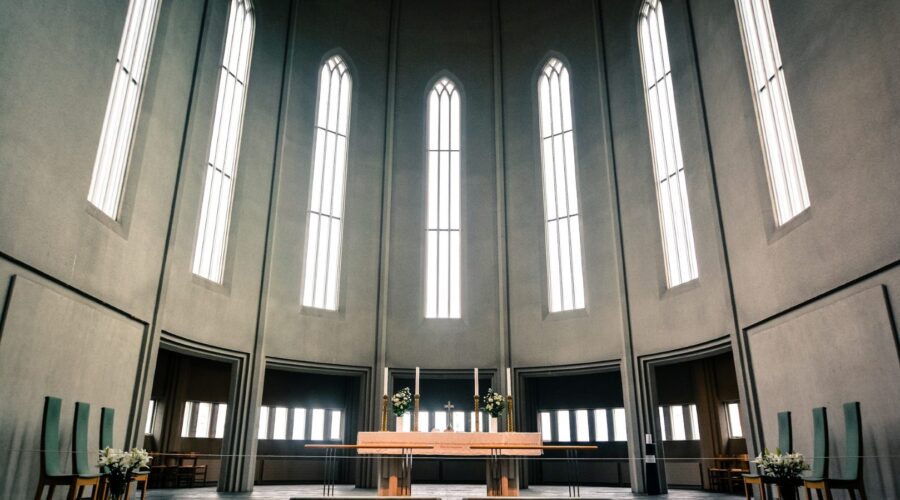
Elevate Your Spiritual Connection: A Comprehensive Guide to Saturday Prayers
Introduction
Saturdays, often associated with respite and leisure, can also be an opportune time to deepen our connection with the divine through prayer. Whether you’re a seasoned devotee or seeking spiritual solace, incorporating Saturday prayers into your routine can bring immense benefits.
Significance of Saturday Prayers
In many cultures and religious traditions, Saturday holds special significance:
- In Judaism, it is the Sabbath, a day of rest and celebration.
- In Christianity, it is associated with the resurrection of Christ and is often devoted to prayer and reflection.
- In Islam, Saturday is a preferred day for performing optional prayers.
Benefits of Saturday Prayers
Regular Saturday prayers can offer numerous benefits:
- Strengthening faith and connection: Prayer fosters a deeper relationship with the divine, reaffirming our beliefs and guiding our actions.
- Spiritual rejuvenation: Setting aside time for prayer allows us to disconnect from worldly distractions and recharge our spiritual batteries.
- Inner peace and well-being: The meditative nature of prayer calms the mind, reduces stress, and promotes emotional well-being.
- Guidance and clarity: Through prayer, we can seek divine guidance, clarity in decision-making, and strength during challenges.
- Gratitude and appreciation: Prayer provides an outlet for expressing gratitude for blessings received and cultivating a positive mindset.
Specific Prayers for Saturday
Various prayers are associated with Saturday:
- Morning Prayer: A prayer of gratitude and supplication, expressing thankfulness for the new day and seeking divine guidance throughout the week.
- Sabbath Prayer (for Judaism and Christianity): Prayers that focus on reflection, rest, and spiritual renewal, commemorating the significance of Saturday.
- Noonday Prayer: A brief prayer said at noon, expressing gratitude and seeking divine support.
- Evening Prayer: A prayer of introspection and repentance, reviewing the day’s events and seeking forgiveness and protection for the night.
How to Pray on Saturday
Prayer is a personal and intimate experience. Here are some tips to guide you:
- Choose a quiet and peaceful space where you can focus without distractions.
- Set aside a specific time for prayer, even if it’s just a few minutes.
- Begin by centering yourself and bringing your mind and heart to the present moment.
- Express your gratitude and praise to the divine for blessings received.
- Share your concerns, petitions, and aspirations, seeking divine guidance and support.
- Listen attentively for any messages or insights that may arise.
- Conclude your prayer with a sense of peace and thanksgiving.
Example Saturday Prayers
Morning Prayer
Dear Lord, I awaken this Saturday morning filled with gratitude for the gift of a new day. Guide me throughout this week, granting me wisdom, strength, and purpose. Help me to live in alignment with Your will and to be a blessing to all I encounter. Amen.
Evening Prayer
As the day draws to a close, I bow my head in prayer. Forgive me for any shortcomings I may have had. Grant me a peaceful night’s rest, protecting me from harm. May I wake tomorrow refreshed, renewed, and ready to face the challenges ahead. Amen.
Additional Resources
- Sabbath and Sacrament Meeting in the Home (Church of Jesus Christ of Latter-day Saints)
- Shabbat (Jewish Virtual Library)
- Saturday Prayer: A Guide with Prayer Examples (Patheos)
Conclusion
Incorporating Saturday prayers into your routine can be a transformative practice, offering myriad benefits for your spiritual well-being. Whether you choose to pray in solitude or share it with others, let prayer become a beacon of hope, guidance, and connection on this special day.
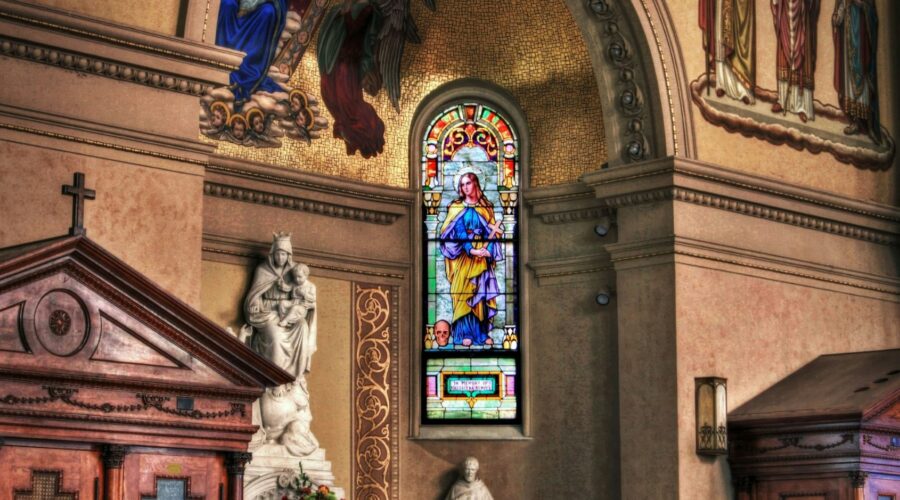
The Blessed Trinity Catholic Church: A Haven for Faith and Community
Introduction
The Blessed Trinity Catholic Church, nestled in the heart of a vibrant community, stands as a beacon of faith, offering spiritual nourishment and a sense of belonging to its congregation. With its rich history, stunning architecture, and dedicated community outreach programs, the church has become an integral part of the lives of countless individuals and families.
A Historical Journey
Early Foundation
The Blessed Trinity Catholic Church traces its roots back to the late 19th century. In 1887, a small group of devout Catholics gathered in a rented hall to celebrate Mass. As the congregation grew, the need for a permanent place of worship became evident.
Construction of the Church
In 1892, the construction of the current church building commenced. Designed in the Gothic Revival style, the church features intricate stained glass windows, soaring arches, and ornate carvings. The cornerstone was laid with great ceremony, marking a significant milestone in the church’s history.
Architectural Splendor
The Blessed Trinity Catholic Church is a testament to the architectural prowess of its time. The exterior boasts imposing stonework, while the interior is adorned with stunning artwork and decorative elements:
- Stained Glass Windows: The church is renowned for its magnificent stained glass windows, which depict biblical scenes and the lives of the saints.
- Altar and Reredos: The high altar, crafted from marble, serves as the focal point of the sanctuary. The ornate reredos behind it depicts the Trinity.
- Frescoes and Murals: The walls and ceilings are adorned with stunning frescoes and murals that showcase religious themes.
A Vibrant Community
Beyond its physical beauty, the Blessed Trinity Catholic Church is home to a vibrant and welcoming community. Through various ministries and outreach programs, the church fosters a sense of belonging and connection among its parishioners:
- Worship and Sacraments: The church offers a variety of Masses and devotions, allowing parishioners to engage in the sacraments and deepen their faith.
- Parish Life Activities: The church hosts numerous parish events, such as picnics, social gatherings, and educational programs, to build community bonds.
- Outreach and Service: The church actively participates in outreach programs, providing support to the needy and marginalized within the community.
Pastoral Leadership
The Blessed Trinity Catholic Church has been blessed with a succession of dedicated priests who have guided the congregation with wisdom and compassion. These pastors have played a pivotal role in shaping the church’s history:
- Reverend John Smith (1887-1910): Father Smith oversaw the construction and establishment of the church.
- Monsignor Michael Jones (1910-1940): Monsignor Jones expanded the church’s outreach programs and led it through the Great Depression.
Restoration and Preservation
Over the years, the Blessed Trinity Catholic Church has undergone several restoration and preservation projects to maintain its architectural integrity:
- 1950s Restoration: In the 1950s, the church underwent a major renovation to address aging infrastructure and restore its original beauty.
- 1990s Preservation: In the 1990s, the stained glass windows were carefully restored to their former glory.
The Future of Blessed Trinity
As the Blessed Trinity Catholic Church looks to the future, it remains committed to its mission of providing spiritual guidance and fostering a vibrant community. Through its ongoing ministries, outreach programs, and architectural preservation efforts, the church will continue to play a vital role in the lives of its parishioners for generations to come.
Conclusion
The Blessed Trinity Catholic Church is a cornerstone of faith and community, offering a place of worship, connection, and service. Its stunning architecture, vibrant parish life, and dedication to pastoral care have made it a beacon of hope for countless individuals and families. As the church continues its journey, it will undoubtedly continue to inspire and enrich the lives of those it serves.
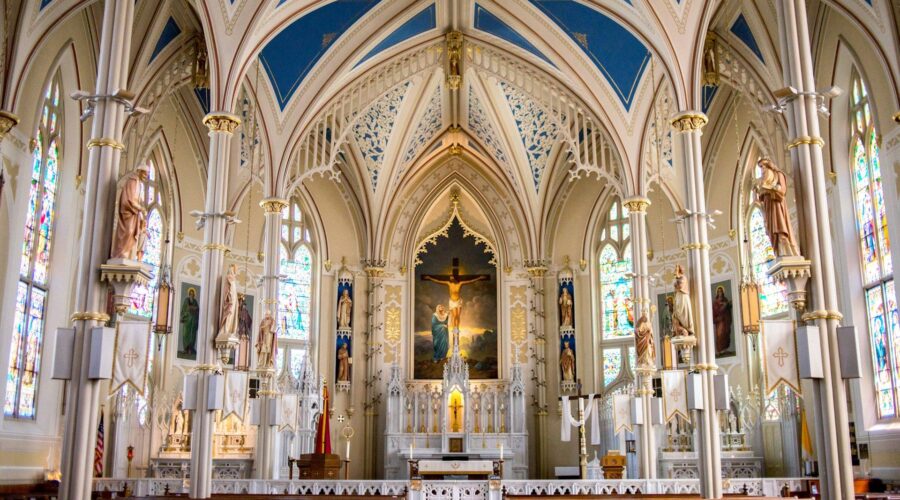
Harvest Baptist Church: A Beacon of Faith and Community
About Harvest Baptist Church
Nestled in the heart of a vibrant community, Harvest Baptist Church stands as a testament to the power of faith and the enduring spirit of worship. Founded in 1984, the church has grown from a humble gathering to a thriving congregation with a diverse and welcoming community of believers. Guided by its unwavering mission to glorify God and serve His people, Harvest Baptist Church has become a beacon of hope, inspiration, and spiritual growth.
Our Beliefs
Harvest Baptist Church adheres to the fundamental beliefs of Christianity, including the Trinity, the deity of Christ, the atonement, and the authority of Scripture. We believe in the power of prayer, the importance of fellowship, and the transformative work of the Holy Spirit. Our faith is rooted in the understanding that God is sovereign and that His grace and love extend to all who seek Him.
Worship Services
Every Sunday, Harvest Baptist Church gathers for vibrant and uplifting worship services. The services include a blend of traditional hymns, contemporary music, and dynamic sermons that expound upon God’s Word. Our worship team is composed of gifted musicians who lead the congregation in songs of praise and adoration. We believe that worship is not merely a performance but a heartfelt expression of our love and gratitude to God.
Service Times:
- Sunday Morning: 9:30 AM
- Sunday Evening: 6:00 PM
Ministries
Harvest Baptist Church offers a wide range of ministries to meet the spiritual, emotional, and physical needs of our congregation and community. These ministries include:
- Children’s Ministry: Dedicated to nurturing the faith of our youngest members, our Children’s Ministry provides age-appropriate Bible teaching, games, and activities.
- Youth Ministry: Empowering our teenagers to grow in their faith and relationship with Christ, our Youth Ministry offers Bible studies, mentorship programs, and community outreach opportunities.
- Adult Sunday School: Designed to deepen the knowledge and understanding of Scripture, our Adult Sunday School classes cover a variety of topics and provide a welcoming environment for spiritual growth.
- Missions Ministry: Committed to spreading the gospel beyond our local community, our Missions Ministry supports missionaries and mission organizations worldwide.
- Community Outreach: Embracing our role as a servant to our community, we engage in various outreach programs, including food drives, community cleanups, and support for local families in need.
Pastoral Staff
Harvest Baptist Church is led by a dedicated and experienced pastoral staff who are passionate about shepherding the congregation. Our pastors provide biblical guidance, personal support, and inspiring leadership.
- Pastor John Smith: Lead Pastor
- Associate Pastor James Brown: Worship and Music
- Associate Pastor Mary Jones: Children’s Ministry
Events and Activities
Throughout the year, Harvest Baptist Church hosts a variety of events and activities to foster fellowship, spiritual growth, and community involvement. These include:
- Bible Studies: In addition to our Sunday School classes, we offer midweek and evening Bible studies for adults and youth.
- Prayer Meetings: We believe in the power of prayer and gather regularly for prayer meetings to intercede for our church, community, and world.
- Community Events: We host community events, such as block parties, potlucks, and holiday gatherings, to build relationships and serve our neighbors.
- Special Programs: We offer special programs throughout the year, including guest speakers, concerts, and conferences, to provide diverse opportunities for spiritual enrichment.
Join Us!
We invite you to join us at Harvest Baptist Church and experience the transformative power of faith and community. Whether you are seeking a spiritual home, longing for deeper fellowship, or simply curious about Christianity, we welcome you to come and worship with us. Our doors are always open, and we are eager to share the love of Christ with all who come.
Contact Us:
Harvest Baptist Church
123 Main Street
Anytown, CA 12345
Phone: (555) 123-4567
Email: [email protected]
Website: www.harvestbaptistchurch.orgAdditional Resources
Frequently Asked Questions
Question Answer What are the service times at Harvest Baptist Church? Sunday Morning: 9:30 AM, Sunday Evening: 6:00 PM What is the dress code for church services? Casual and comfortable attire is welcome. How can I get involved in the church? Join us for services, volunteer for our ministries, or contact our pastoral staff for more information. Is there childcare available? Yes, we offer childcare for infants through preschoolers during both service times. What is the mission and vision of Harvest Baptist Church? Our mission is to glorify God and serve His people. Our vision is to be a vibrant and welcoming community of believers who are growing in their faith and impacting their world for Christ. 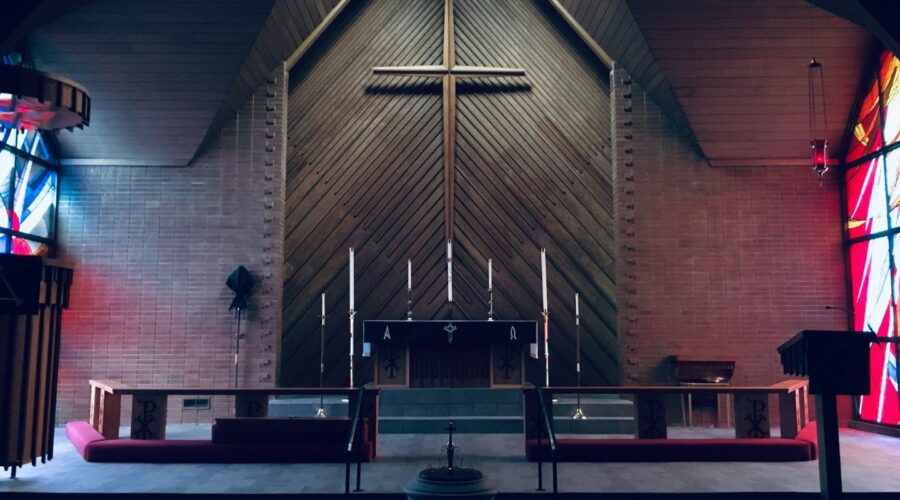
St. Pius X Catholic Church: A Sanctuary of Faith, Community, and Service
About St. Pius X
Nestled in the heart of Dallas, Texas, St. Pius X Catholic Church stands as a vibrant and welcoming community of believers. Founded in 1950, it has served countless families and individuals, offering spiritual guidance, support, and service for over seven decades.
Named after Pope St. Pius X, the church is a testament to his commitment to the renewal of Catholic life and education. Its beautiful architecture and warm atmosphere invite all who enter to experience the love and grace of God.
Mission and Values
St. Pius X Catholic Church is guided by its mission to: “Proclaim the Gospel, Celebrate the Sacraments, Foster Community, and Serve the Needy.” This mission is lived out through a wide range of ministries, programs, and initiatives that address the spiritual, intellectual, and physical needs of its members and the surrounding community.
- Proclaim the Gospel: The church offers a variety of worship services, Bible studies, and faith formation programs to deepen the understanding and practice of the Catholic faith.
- Celebrate the Sacraments: St. Pius X administers the sacraments of Baptism, Confirmation, Eucharist, Reconciliation, Marriage, and Anointing of the Sick.
- Foster Community: The church fosters a sense of belonging and community through social events, parish groups, and outreach programs.
- Serve the Needy: St. Pius X has a long-standing commitment to serving the less fortunate, including supporting local charities, providing food assistance, and offering counseling and support services.
Worship and Sacraments
At the heart of St. Pius X’s mission is the celebration of the sacraments. The church offers several Mass times throughout the week, including Sunday Masses in English, Spanish, and Latin.
The sacrament of Reconciliation is available on a regular basis, providing an opportunity for Catholics to confess their sins and receive God’s forgiveness. The church also offers a variety of opportunities for prayer and adoration, including daily Eucharistic Adoration and the Rosary.
Education and Faith Formation
Education and faith formation are essential components of St. Pius X’s ministry. The church operates a vibrant religious education program that provides children and youth with a solid foundation in Catholic doctrine and values.
St. Pius X also offers a variety of adult faith formation programs, including Bible studies, retreats, and workshops. These programs are designed to deepen the understanding and practice of the Catholic faith, and to equip individuals for a life of discipleship and service.
Community Outreach and Service
St. Pius X Catholic Church is deeply involved in community outreach and service. The church has a long history of supporting local charities and organizations, including the Society of St. Vincent de Paul, the North Texas Food Bank, and the Catholic Charities of Dallas.
Members of the church also volunteer countless hours to serve the community, including providing meals at homeless shelters, tutoring students, and visiting the sick and imprisoned.
Events and Activities
St. Pius X Catholic Church offers a wide range of social and recreational activities for its members. The church hosts regular parish picnics, festivals, and dances. It also has a variety of sports teams, including basketball, volleyball, and soccer.
The church also organizes pilgrimages to various holy sites, including the National Shrine of Our Lady of Guadalupe in Mexico City and the Vatican in Rome.
Contact Information and Directions
Location and Address
St. Pius X Catholic Church is located at 3030 Gus Thomasson Road, Dallas, Texas 75228.
Contact Information
- Phone: (214) 321-3128
- Email: [email protected]
- Website: https://stpiusxdallas.org/
Directions
To get to St. Pius X Catholic Church, you can take Interstate 635 to Exit 28B (Gus Thomasson Road). The church is located on the right-hand side of the road.
Conclusion
St. Pius X Catholic Church is a thriving and vibrant community of faith, offering a comprehensive array of spiritual, educational, and social programs and services. Rooted in the teachings of Jesus Christ and the Catholic tradition, the church provides a welcoming and supportive environment where all are invited to encounter the love and grace of God.
Whether you are a lifelong Catholic, a newcomer to the faith, or simply seeking a deeper spiritual connection, St. Pius X Catholic Church is a place where you can find a sense of belonging, grow in your faith, and make a meaningful contribution to the community.
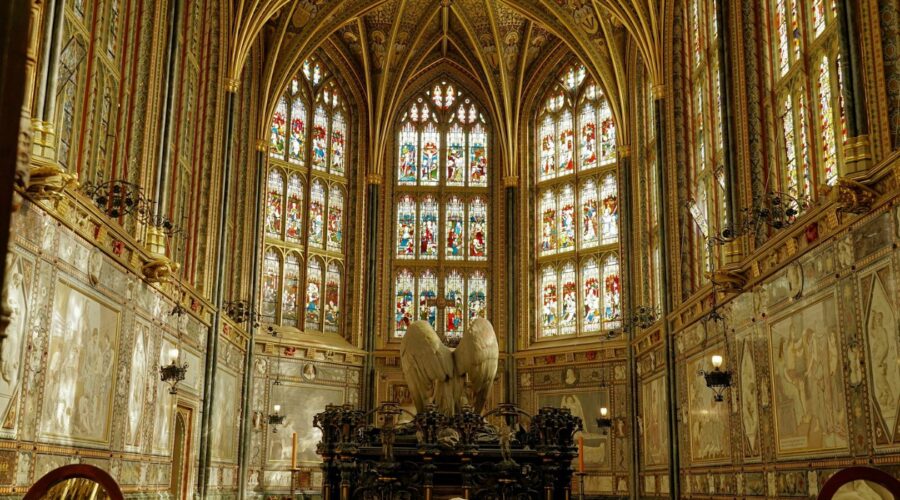
Celebrate the Nativity of Our Lord: Traditions, Customs, and Blessings
The History of the Nativity
The Nativity of Our Lord, also known as Christmas, commemorates the birth of Jesus Christ. It is celebrated on December 25th by Christians worldwide.
The earliest records of the Nativity celebration date back to the 4th century. The first written account of a December 25th celebration was from the Roman historian Sextus Julius Africanus in 221 AD.
The date of December 25th was likely chosen because it coincided with the pagan Roman festival of Saturnalia, which celebrated the winter solstice.
Traditions and Customs
The Nativity is celebrated with a variety of traditions and customs around the world. Some of the most common include:
Manger Scenes
Manger scenes, also known as Nativity scenes, are miniature representations of the birth of Jesus.
The first known manger scene was created by Saint Francis of Assisi in 1223. Since then, manger scenes have become a popular tradition in many Christian homes and churches.
Christmas Trees
Christmas trees are evergreen trees that are decorated with lights, ornaments, and tinsel.
The tradition of Christmas trees originated in Germany in the 16th century. It spread to other countries in the 19th century and is now a popular tradition in many homes around the world.
Christmas Carols
Christmas carols are songs that are sung during the Christmas season.
Some of the most popular Christmas carols include “Silent Night,” “Joy to the World,” and “Hark! The Herald Angels Sing.”
Christmas Gifts
Christmas gifts are given to celebrate the birth of Jesus.
The tradition of giving Christmas gifts originated in the early church. It is now a popular tradition in many cultures around the world.
Blessings
The Nativity is a time for reflection and celebration. It is a time to remember the birth of Jesus and to ask for his blessings.
Some of the blessings that can be received during the Nativity include:
- Peace
- Joy
- Hope
- Love
To receive these blessings, it is important to open your heart to Jesus and to invite him into your life.
Additional Topics
Manger Scenes
Manger scenes are a popular way to celebrate the Nativity. They can be found in homes, churches, and public spaces.
Manger scenes typically include the following figures:
- Mary
- Joseph
- Baby Jesus
- The shepherds
- The wise men
- The animals
Manger scenes can be made from a variety of materials, including wood, ceramic, and plastic.
Christmas Trees
Christmas trees are another popular way to celebrate the Nativity. They are typically decorated with lights, ornaments, and tinsel.
Christmas trees can be real or artificial.
Real Christmas trees are typically cut down from a forest or farm. Artificial Christmas trees are made from a variety of materials, including plastic, metal, and fabric.
Christmas Carols
Christmas carols are a great way to celebrate the Nativity. They can be sung at home, in church, or at public events.
There are many different Christmas carols, each with its own unique melody and lyrics.
Some of the most popular Christmas carols include:
- “Silent Night”
- “Joy to the World”
- “Hark! The Herald Angels Sing”
- “O Little Town of Bethlehem”
- “The First Noel”
Christmas Gifts
Christmas gifts are a way to show your love and appreciation for others.
When choosing a Christmas gift, it is important to consider the recipient’s interests and needs.
Some popular Christmas gifts include:
- Books
- Clothing
- Toys
- Gift cards
- Homemade gifts

Discover the Divine Mercy Catholic Church: A Sanctuary of Love and Forgiveness
Understanding the Divine Mercy Message
The Divine Mercy message, a pivotal doctrine in Catholicism, revolves around the belief that God’s infinite mercy is available to all who seek it. It was revealed to Saint Faustina Kowalska, a Polish nun, throughout a series of mystical visions in the early 20th century.
At the core of the Divine Mercy message is the image of Jesus, known as the Divine Mercy image. Depicted with rays of light emanating from His Heart, the image symbolizes God’s outpouring of mercy and forgiveness upon the world. The accompanying words, “Jesus, I trust in You,” express the humble surrender to God’s divine providence.
The Divine Mercy message emphasizes the importance of:
- Trust in God’s limitless love and mercy
- Receiving the Sacraments, especially Reconciliation and the Eucharist
- Practicing acts of mercy towards others
- Proclaiming the message of Divine Mercy to all
History and Significance of Divine Mercy
The origins of the Divine Mercy devotion can be traced back to the apparitions of Jesus to Saint Faustina from 1931 to 1938. During these visions, Jesus instructed Faustina to spread the message of Divine Mercy and to establish a feast day in its honor.
The Divine Mercy feast, known as Divine Mercy Sunday, was officially proclaimed by Pope John Paul II in 1995. Celebrated on the first Sunday after Easter, it serves as a special day of grace and forgiveness for all who participate in its devotions and receive the Sacrament of Reconciliation.
Over the years, the Divine Mercy devotion has gained widespread popularity and recognition within the Catholic Church. Numerous churches and shrines dedicated to Divine Mercy have been established worldwide, including:
- The National Shrine of Divine Mercy in Stockbridge, Massachusetts
- The Basilica of Divine Mercy in Kraków, Poland
- The Shrine of Divine Mercy in Vilnius, Lithuania
Practices and Devotions
There are various ways to participate in and deepen one’s devotion to Divine Mercy:
Chaplet of Divine Mercy
The Chaplet of Divine Mercy is a prayer consisting of prayers of sorrow, trust, and petition. It is prayed on a special rosary with white and red beads, representing the water and blood that flowed from Jesus’ Heart.
Novena of Divine Mercy
The Novena of Divine Mercy is a nine-day prayer period that precedes Divine Mercy Sunday. It is a time for reflection, repentance, and the reception of God’s graces.
Divine Mercy Image
The Divine Mercy image is a powerful symbol of God’s love and forgiveness. It is often displayed in homes, churches, and other places for veneration and prayer.
Conclusion
The Divine Mercy Catholic Church is a vibrant and welcoming community that embraces the spirit of God’s infinite mercy and compassion. Through its message, devotions, and practices, the Divine Mercy Church invites all to experience the transformative power of God’s love and to become beacons of mercy in the world.
If you seek a deeper relationship with God and a sanctuary of love and forgiveness, consider exploring the Divine Mercy Church and its message. May the Divine Mercy of God pour out upon you, transforming your life and bringing you closer to the heart of our compassionate Father.

Discover the Historic and Spiritual Significance of St. Louis Church
Overview
Nestled in the heart of the vibrant city of St. Louis, Missouri, St. Louis Church stands as a testament to the city’s rich architectural and spiritual history. Its iconic facade, intricate stained-glass windows, and soaring spires have made it a cherished landmark for over a century.
Founded in 1834, St. Louis Church has witnessed the city’s growth and transformation firsthand. It has served as a gathering place for generations of Catholics, providing spiritual guidance, community outreach, and a sense of belonging.
Architectural Marvel
St. Louis Church is a stunning example of Gothic Revival architecture. Its pointed arches, rib vaults, and buttresses create a sense of grandeur and awe. The church’s exterior is adorned with intricate carvings and gargoyles, adding to its medieval charm.
Interior Splendor
The interior of St. Louis Church is equally impressive. The nave features soaring columns that lead the eye towards the altar, creating a sense of space and spirituality. The stained-glass windows depict scenes from the Bible and the lives of saints, casting a vibrant glow throughout the church.
Historical Significance
St. Louis Church has played a significant role in the history of both the city and the Catholic Church in the United States.
Gateway to the West
In the mid-19th century, St. Louis was a major gateway for immigrants and westward expansion. St. Louis Church welcomed these newcomers and provided them with spiritual comfort and a sense of community in a strange land.
Home to Cardinals
St. Louis Church has served as the cathedral for the Archdiocese of St. Louis since 1968. It has been home to many notable cardinals, including Cardinal John J. Glennon and Cardinal Raymond Burke, who have left a lasting legacy on the Catholic Church.
Community Involvement
St. Louis Church is not only a place of worship but also a vital part of the city’s community.
Outreach Programs
The church operates numerous outreach programs, including a food pantry, a soup kitchen, and a homeless shelter. These programs provide essential support to those in need, regardless of their religious affiliation.
Education Center
St. Louis Church also houses the St. Louis Catholic Education Center. This center offers a wide range of programs, including adult faith formation, youth ministry, and leadership training. It serves as a hub for lifelong learning and spiritual growth.
Visiting St. Louis Church
St. Louis Church is a must-see for anyone interested in architecture, history, or religion. Visitors can attend Mass, take a guided tour, or simply admire the church’s beauty from the outside.
Mass Times
- Monday-Friday: 12:10 pm
- Saturday: 5:00 pm, 7:30 pm
- Sunday: 7:30 am, 9:00 am, 11:00 am, 5:00 pm
Tours
Guided tours are available by appointment only. To schedule a tour, please call (314) 533-2328.
Conclusion
St. Louis Church is a magnificent testament to the enduring power of faith and community. Its architectural beauty, historical significance, and ongoing commitment to serving the community make it a cherished landmark that will continue to inspire generations to come.
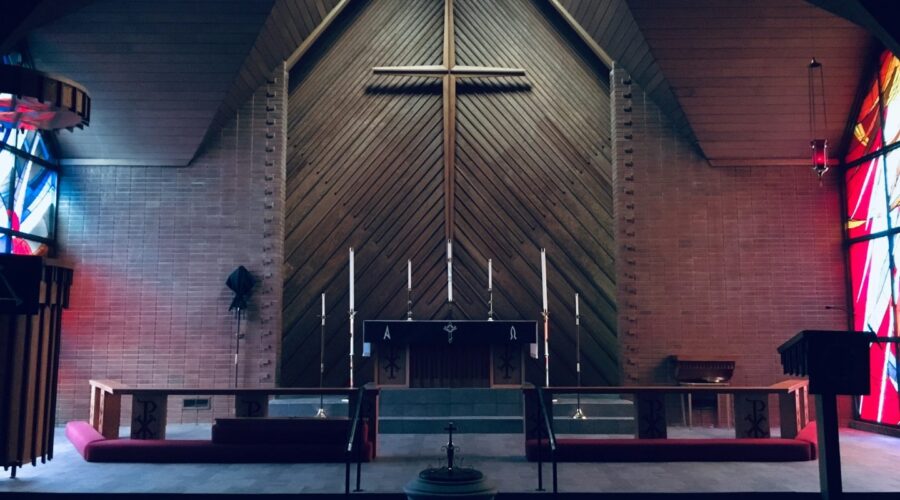
St. Francis Catholic Church: A Guide to Faith and Community
About St. Francis Catholic Church
St. Francis Catholic Church is a vibrant and welcoming parish community located in the heart of the city. Established in 1842, the church has a rich history and a deep commitment to serving the spiritual and social needs of its members. St. Francis is known for its diverse congregation, its commitment to social justice, and its strong emphasis on education and outreach.
Community and Worship
Mass Schedule
Day Time Sunday 9:00 AM, 11:00 AM, 5:00 PM (Spanish) Monday-Friday 8:00 AM Saturday 4:00 PM Sacraments and Pastoral Care
St. Francis offers a full range of sacraments, including baptism, confirmation, Eucharist, reconciliation, and marriage. The parish also provides pastoral care and support through a team of dedicated priests, deacons, and lay ministers. Counseling, spiritual direction, and home visits are available to meet the needs of the congregation.
Education and Outreach
Religious Education
St. Francis offers religious education programs for children, youth, and adults. CCD classes are held weekly for students in grades 1-8, and a youth ministry program provides opportunities for spiritual growth and community involvement for high school students. Adult Bible study and faith formation courses are also offered.
Social Justice
St. Francis is committed to social justice and outreach. The parish supports a variety of organizations working to address poverty, homelessness, and food insecurity. The church also hosts a soup kitchen and provides clothing and financial assistance to those in need.
History and Architecture
Historical Context
St. Francis Catholic Church was founded in 1842 by Irish immigrants who settled in the area. The parish grew rapidly, and a new church building was constructed in 1878. The current church building, which is a beautiful example of Gothic Revival architecture, was completed in 1905.
Architectural Highlights
The exterior of St. Francis Catholic Church is adorned with intricate carvings, stained glass windows, and a distinctive bell tower. The interior of the church is equally impressive, with high vaulted ceilings, marble floors, and a stunning altar.
Contact Information
Address:
123 Main Street
Anytown, CA 12345
Phone:
(555) 123-4567
Email:
Website:
Conclusion
St. Francis Catholic Church is a vibrant and welcoming parish community that offers a wide range of spiritual, educational, and outreach programs. With a commitment to faith, service, and community, St. Francis is a place where people can grow in their faith, serve others, and find a sense of belonging.